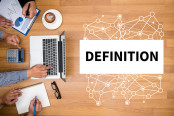There’s a big expense looming on the horizon for many parents and grandparents. And no, it’s not retirement. We’re talking about the rising cost of higher education.
ETFs Make Sense In 529 Plans
Exchange-traded funds have become a popular fund variety as they offer plenty of unique benefits to investors. For starters, ETFs are generally index funds. This provides investors diversification benefits across a variety of asset classes. Today, you can find ETFs holding broad stock market indexes, bonds and equities contained within various sectors and even commodities.
Secondly, as index trackers, ETFs tend to feature lower expense ratios and costs than traditional active mutual funds. This is very important as the cost of ownership remains one of the major hurdles to investment performance. The less you spend on your investments, the more money you have to compound. This is where ETFs shine in 529 plans.
When savers invest in a 529 plan, what they are really doing is buying into a so-called master portfolio. These master portfolios can be tied to various allocation or age-based strategies or seek to invest in a certain segment of the market. 529 plan program managers can use ETFs in these underlying master portfolios to build out their strategies at much cheaper costs than using mutual funds or active management.
For example, the SSGA Upromise 529 Plan’s SPDR S&P 600 Small Cap Portfolio uses the SPDR S&P 600 Small Cap ETF (SLY) to gain exposure to the index, while the BlackRock sponsored iShares 2024 College Portfolio Class F uses several ETFs to build a portfolio for a student that will start attending college in the year 2024. Holdings for this master portfolio include iShares Core S&P Total U.S. Stock Market ETF (ITOT), iShares 20+ Year Treasury Bond ETF (TLT), iShares Core MSCI EAFE ETF (IEFA) and iShares Core U.S. REIT ETF (USRT).
By using ETFs, 529 managers and individual investors can tweak their allocations to the exact specifications they desire. This, along with the idea that the cost savings of using ETFs over other more traditional investments, is passed onto investors, making them a powerful combination for 529 plan savers.
However, two of the major benefits of ETFs are overlooked when using them in 529 plans. That’s their tax efficiency and liquidity. As index funds, and thanks to their creation/redemption mechanism, ETFs are naturally tax efficient. But by placing them in a tax-deferred/tax-free plan structure, this benefit is ignored.
The ability to trade ETFs on an intraday basis is also overpassed when using them in 529 plans.
Investors using 529 plans own units in so-called master portfolios that invest in the underlying ETFs and funds. Because of this master portfolio structure, all 529 plans are governed by rules that limit selling activity to just once or twice per year depending on the plan.
As mentioned previously, you can also pick mutual funds in your 529 plans. Click here to learn more about mutual funds.
Using ETFs to Your Advantage
ETFs have already changed the retirement and investing world. Now, they are changing how we save for college as well. Given the benefits of ETFs and the importance of saving for college, it’s imperative that investors have the tools needed to manage their investments in this area. With that in mind, here at 529s.com, we plan on building out a one-stop hub for investors looking at direct-sold and advisor-sold college savings plans. This includes the latest data on the various master portfolios using ETFs as well as tools to help screen, compare and analyze investment options.
Moreover, 529s.com will be the place to find the latest news and ins/outs of everything related to college savings plans, from new regulations and withdrawal methods to using ETFs to build a custom college savings plan.
The Bottom Line
With more than $1.4 trillion in student debt outstanding, saving for college has never been more important. 529 plans that utilize ETFs can be a major factor in helping reduce your student’s potential debt burden and still get the higher education that is needed for future security and growth.
Don’t forget to check the Financial Advisor Center at MutualFunds.com wherein financial advisors can find different ways to manage their practices successfully.






